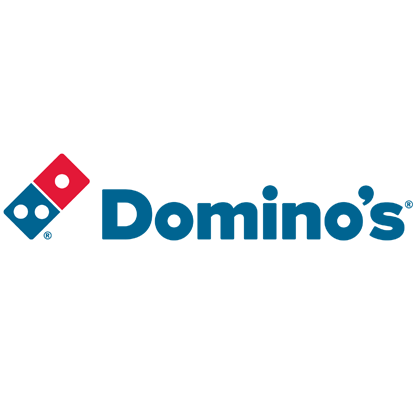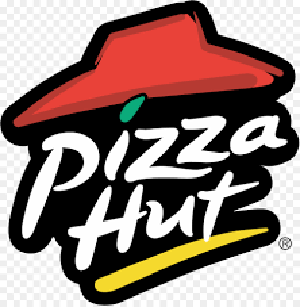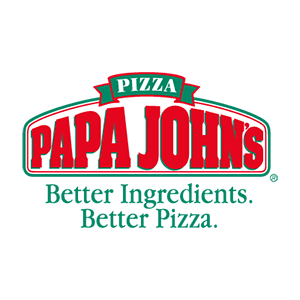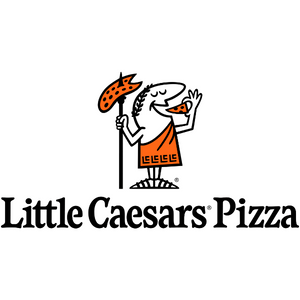Domino’s Franchise in 2025: Costs, Fee & FDD
Explore the ins and outs of investing in a Domino’s franchise, from costs and earnings to the support system that drives success. Discover if you and this globally recognized brand are the right match.
Table of Contents:
Domino’s, a household name in the world of pizza, was founded in 1960 by Tom Monaghan and his brother James in Ypsilanti, Michigan. The company started with a single location, but under Tom’s leadership, it quickly grew into one of the most recognized pizza franchises globally. What sets Domino’s apart is its relentless focus on innovation and customer convenience, making it a significant player in the quick-service restaurant (QSR) industry. From pioneering the 30-minute delivery promise to introducing a robust online ordering system, Domino’s has always been at the forefront of making pizza accessible and enjoyable for everyone.
At its core, Domino’s offers a wide range of pizzas, known for their signature hand-tossed dough, diverse toppings, and customizable options. Beyond pizzas, the menu includes various sides such as chicken wings, breadsticks, and desserts, catering to a broad audience of pizza lovers and families looking for a quick, satisfying meal. The brand’s core customers are typically busy individuals and families who prioritize convenience without sacrificing taste. With its competitive pricing and strong brand reputation, Domino’s appeals to a wide demographic, from college students to office workers, making it a staple in both urban and suburban markets.
Today, Domino’s boasts an impressive global presence with over 19,000 locations across more than 90 countries. In the U.S. alone, there are thousands of stores, making it one of the largest pizza chains in the world. On an average day, Domino’s serves over 3 million customers worldwide, a testament to its popularity and the efficiency of its operations. This scale allows Domino’s to maintain a strong supply chain, ensuring that fresh ingredients and consistent quality are available across all its locations.
Franchisees benefit from Domino’s comprehensive support system, which includes extensive training programs that cover everything from day-to-day operations to marketing strategies. New franchisees receive hands-on experience in running a store, ensuring they are well-prepared to manage their business effectively. Additionally, Domino’s offers ongoing support in areas such as technology, real estate, and supply chain management, helping franchisees navigate the complexities of the QSR industry. The brand’s commitment to innovation, including its investments in digital ordering and delivery technologies, further enhances the potential for success as a Domino’s franchisee.
Domino’s Franchise Insights
- Global Reach: Domino’s operates in over 90 countries with more than 18,000 stores worldwide, making it one of the largest pizza franchises on the planet.
- Tech Savvy: Domino’s generates over 75% of its U.S. sales through digital channels, thanks to their cutting-edge app and online ordering system, which leads the industry in innovation.
- High Repeat Business: Domino’s has a fiercely loyal customer base, with around 70% of their business coming from repeat customers, thanks to their consistent product quality and strong brand reputation.
Domino’s Franchise Key indicators
Growth YOY (%)
3%
vs industry 1%
Total U.S. Franchised Units
6,621
3-Year Failure Rate
1%
vs industry 4%
Sales-to-Investment ratio
3:1
How much does it cost to open a Domino’s franchise?
Understanding the potential investment size and capital requirements is crucial when considering opening a Domino’s franchise. These financial commitments, including initial franchise fees, equipment costs, and ongoing operational expenses, impact the feasibility and profitability of the venture. Thoroughly evaluating these factors ensures that potential franchisees are prepared for the financial responsibilities and can make informed decisions about their ability to sustain and grow the business, ultimately contributing to long-term success.
Min & Max Investment
Opening a Domino’s franchise involves several key costs, which are outlined in Item 7 of the Franchise Disclosure Document (FDD). You can see a breakdown of the costs to open a Domino’s below from the most recent Item 7 below:
Item 7 in the Franchise Disclosure Document (FDD) is the “Estimated Initial Investment” section. It outlines the total costs a franchisee can expect to incur when starting a franchise, including the initial franchise fee, equipment, inventory, real estate, and other startup expenses. This section is crucial because it provides potential franchisees with a detailed understanding of the financial commitment required, helping them assess affordability and plan their investment strategy effectively.
| Type of Expenditure | Minimum Investment | Maximum Investment |
|---|---|---|
| Initial Fee | $0 | $10,000 |
| Leasehold Improvements | $25,000 | $350,000 |
| Furniture, Fixtures, and Equipment | $81,000 | $145,000 |
| Signage | $5,200 | $35,000 |
| 3 Months' Rent | $3,000 | $25,000 |
| Security Deposit | $1,000 | $10,000 |
| Opening Inventory and Supplies | $2,750 | $6,500 |
| Opening Advertising and Promotion | $0 | $3,000 |
| Training Expenses | $1,000 | $4,000 |
| Insurance | $25,000 | $75,000 |
| Miscellaneous Opening Costs | $2,500 | $7,000 |
| Additional Funds - 3 Months | $10,000 | $73,000 |
| Total Estimated Initial Investment | $156,450 | $743,500 |
Required Capital
To open a Domino’s franchise, the required capital involves both the initial investment costs and a net worth requirement set by Domino’s. Let’s take a closer look below:
- Initial Investment As shown above, the total estimated initial investment ranges from $156,450 to $743,500. This includes all the startup costs such as the franchise fee, real estate, construction, equipment, initial inventory, and additional funds for initial operating expenses. Assuming that you will finance your franchise investment, you should plan to have 20% of the total investment amount in the form of equity (cash) for the investment.
- Liquid Assets While specific numbers for Domino’s aren’t always disclosed, for a franchise in this industry, you generally need liquid assets of around $100,000 to $250,000. This is an estimate based on the financial requirements of similar quick-service restaurant franchises.
- Net Worth The estimated net worth required for a franchise like Domino’s could range from $250,000 to $500,000. This is also an estimate, as franchise brands often require a certain level of financial stability to ensure that franchisees can manage the costs of running the business effectively.
How much does a Domino’s franchise owner make?
Calculating the salary of a Domino’s franchise owner involves analyzing gross sales to determine total revenue, assessing operational efficiency to understand profit margins, and accounting for franchisor fees and additional expenses such as rent, utilities, and payroll. Effective management of these factors can significantly impact the profitability and financial success of a Domino’s franchise owner. This comprehensive financial analysis helps estimate net profits, from which the owner’s salary can be derived. A clear understanding of these factors ensures accurate salary projections and financial planning for sustainable business operations.
Domino’s Revenue & Gross Sales
Based on most recent analysis, Domino’s franchises achieved a median gross sales of $1,264,744, reflecting a 2% decrease from the previous year. This might be due to several factors, internal and external, which could have affected the revenue performance.
Which key factors impact the average revenue performance of Domino’s franchisees?
The performance of U.S. franchisee median gross sales for Domino’s this past year compared to the prior year is likely influenced by several key factors. First, Domino’s continued focus on digital innovation, including its robust online ordering platform and mobile app, has enhanced customer convenience and driven sales. Additionally, the brand’s efficient delivery model, which became even more critical during and after the pandemic, likely contributed to consistent demand. The strategic expansion of menu options, including new specialty pizzas and value deals, also helped attract a broader customer base. Lastly, economic factors such as inflation and changes in consumer spending behavior might have impacted sales, with customers seeking affordable and convenient meal options, further boosting Domino’s sales performance.
Domino’s Franchise Operational Costs
When opening a Domino’s franchise, several key ongoing operational costs should be considered beyond the standard franchise fees:
- Labor Costs Employee wages and benefits will be a significant portion of your ongoing expenses. This includes hiring, training, and retaining staff to manage daily operations, including delivery drivers, kitchen staff, and management.
- Ingredient and Supply Costs Regular procurement of high-quality ingredients, such as dough, cheese, toppings, and packaging materials, is essential for maintaining product consistency and customer satisfaction.
- Utilities and Maintenance Monthly expenses for electricity, water, and gas, as well as the maintenance of kitchen equipment, ovens, and delivery vehicles, are ongoing costs that can fluctuate based on usage and wear and tear.
- Marketing and Local Advertising While there is a national advertising fund, investing in local marketing initiatives, such as promotions, sponsorships, and community events, is crucial for driving foot traffic and increasing brand visibility in your specific market.
- Delivery Fleet Costs If you manage your own delivery vehicles, ongoing costs for fuel, vehicle maintenance, and insurance will be a continuous expense to factor in.
These operational costs are critical to consider as they directly impact your profitability and require careful management to ensure the success of your franchise.
Domino’s Franchise Fees
All franchises tend to charge ongoing fees that franchisees are required to pay to operate. Domino’s requires their franchisees to pay the below fees:
- Royalty Fee This is a weekly fee paid to Domino’s, typically calculated as a percentage of gross sales. For Domino’s, this fee is 5.5% of the restaurant’s weekly Royalty sales.
- Advertising Fund The advertising fund contribution is 4% of sales, paid weekly.
- Additional Fees There are additional fees for training programs, technology, and other items provided by Domino’s that may be applied
These ongoing fees are essential to consider when planning the financial aspects of owning and operating a Domino’s franchise.
Domino’s Franchise Earnings
Based on the most recent data, a Domino’s franchise has median gross sales of approximately $1,264,744. For an owner-operator, the estimated earnings are around $189,712. These earnings are a solid indicator of the potential profitability of running a Domino’s franchise, assuming efficient management and control of operating costs.
How to Open a Domino’s Franchise
Becoming a Domino’s franchisee involves a structured process that ensures you’re well-prepared to manage and operate your business effectively. Here’s an overview of the steps involved:
- Initial Inquiry In order to become a franchisee in the U.S., you must have at least one year of experience working as a Domino’s general manager or supervisor. If you meet this criteria and wish you become a franchisee, you would submit your application to Domino’s.
- Evaluation and Background Check Domino’s will evaluate your application, including a thorough background check. They’ll assess your financial stability, relevant experience, and commitment to the brand. Additionally, they will check to ensure that you worked at a Domino’s as a general manager or supervisor for at least one year.
- Interview and Discovery Day If your application is approved, you’ll be invited to an interview with Domino’s representatives. Following a successful interview, you may be invited to a Discovery Day, where you’ll visit Domino’s headquarters to learn more about the brand, meet the team, and get an in-depth understanding of the franchise operations.
- Franchise Agreement and Financing Once you’re approved as a franchisee, you’ll need to sign the franchise agreement. At this stage, securing financing is crucial.
- Training Program Domino’s offers an extensive training program covering all aspects of store management, including operations, marketing, and customer service. This training ensures you’re fully equipped to run your franchise.
- Site Selection and Build-Out With the help of Domino’s real estate team, you’ll choose a suitable location for your franchise. Once selected, the build-out process begins, which includes designing the store layout, ordering equipment, and ensuring everything meets Domino’s brand standards.
- Pre-Opening Marketing and Hiring Before opening, you’ll engage in local marketing efforts to build anticipation in the community. You’ll also need to hire and train staff, ensuring your team is ready for the grand opening.
- Grand Opening and Ongoing Support Once everything is in place, you’ll host your grand opening. Domino’s provides ongoing support through their field operations team, ensuring your franchise gets off to a successful start and continues to thrive.
Pros & Cons
Pros
Strong Brand Recognition: Domino’s is a globally recognized brand with a loyal customer base, making it easier to attract customers from day one.
Proven Business Model: With over 60 years in the industry, Domino’s has developed a highly efficient and scalable business model that has been replicated successfully across thousands of locations worldwide.
Scalability: With the potential to open multiple locations and a strong franchise system backing you, there is significant potential for expansion and increased profitability over time.
Cons:
High Initial Investment: The required investment, ranging from $156,450 to $744,000, can be substantial, especially in competitive or high-cost markets.
Market Saturation: In some regions, the market may already be saturated with Domino’s locations, potentially limiting your growth opportunities or increasing competition with nearby franchisees.




